Seasons – Winter 2018
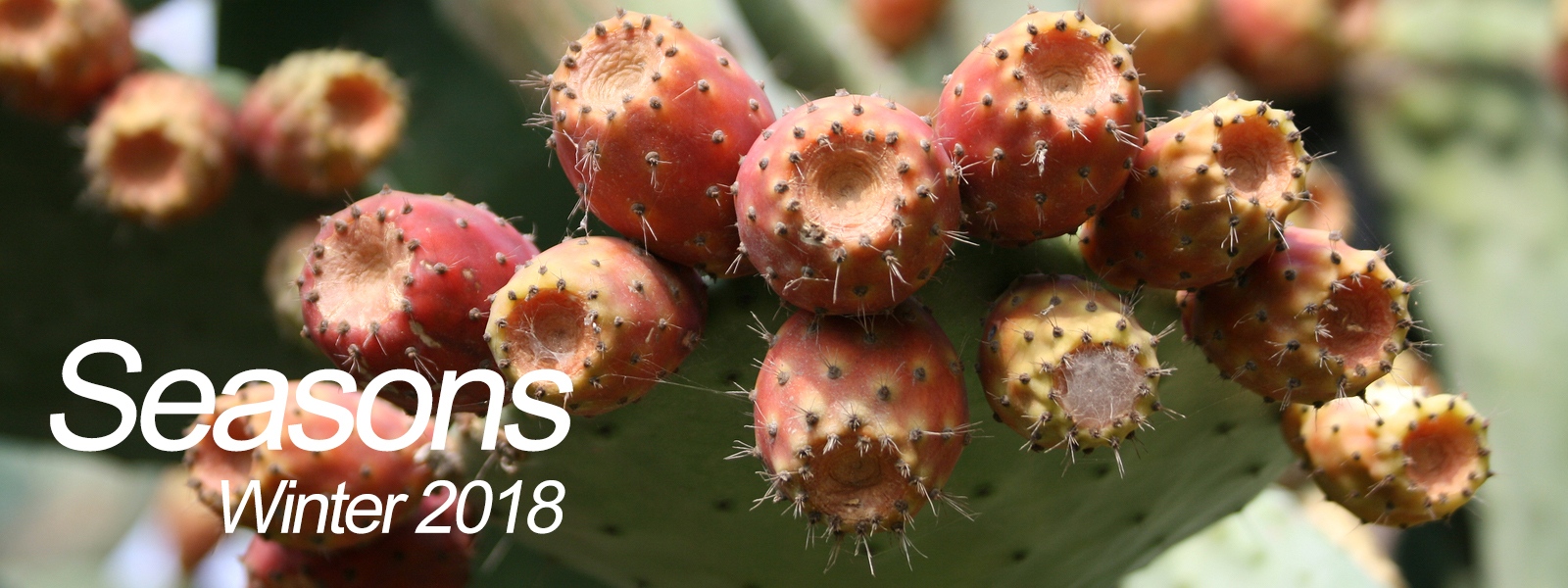
From the Plateau Land & Wildlife Management Team
We’ve seen a few cold snaps here in Central Texas and we are all getting in the holiday spirit. This time of year is full of joy, relaxation*, and celebrations. The crew at Plateau is feeling particularly celebratory this year because we have a lot to be grateful for.
For one, we work at one of the best companies in the world. This company allows us to do what we love, which is working with landowners, helping them improve their land and get more joy out of owning it. The holiday season is also a time for evaluation of our successes and challenges – a time of reflecting and looking forward too. We encourage you to think about your land and wildlife management journey as we come to the end of the year. Please share with us your challenges and successes of 2018, via email or on one of our social media channels. We love to hear from you!
As you tie your final ribbons on gifts and reflect on the closing of another year, be sure to add wildlife management valuation to your list of those things you did right this year – because an investment in the enjoyment of your land, the heritage of land ownership, and protecting our natural resources is something that will pay dividends for many more years to come.
Happy holidays to you and yours.
Until next season and Seasons,
The Plateau Team
*Editor’s Note: Our busy field technicians may disagree with the relaxation part as they brave the elements to dutifully complete end-of-year activities for our landowners.
Table of Contents
Ag Exemption or Valuation? Does it Matter?
Winter Wildlife Management Activity Checklist
Importance of Proper Deer Management on High Fenced Properties in Hill Country
Plateau is Expanding North
What Is This? iNaturalist Review
Service Spotlight: Seminars
Fire Ecology in Texas
The People of Plateau
Braun & Gresham – Permian Highway Pipeline
Introducing Jan Gunter
Plateau Land Group Featured Listing
Austin Wildlife Rescue Needs Landowner Assistance
Ag Exemption or Valuation? Does it Matter?
By Shane Kiefer, CWB ®, RPTC, Director of Ecological Services
At the end of the day, it’s a property tax savings, but using the right terms can help avoid confusion.
With the Texas Legislature preparing to begin the 2019 session, I expect at least one or two newspaper articles next spring about how some landowners are getting tax “exemptions” for having a few cows or some wildlife on their property and thus not paying their fair share of property taxes. I’ve written before about why that perception is economically incorrect, but I think the language we use helps contribute to that misunderstanding.
As Plateau has learned over more than two decades of helping landowners with ag and wildlife exemptions (turns out that’s what most people call them), misunderstandings are common and conventional wisdom can be misleading. Even something as simple as what to call this significant property tax benefit can be confusing. We learned this through some of our recent efforts to understand how people find information on wildlife management exemptions and I thought a primer on the terms was warranted.
So what is it called?
- ag exemption
- timber exemption
- wildlife exemption
- ag exemption for wildlife
- agricultural appraisal for wildlife
- 1-d-1 exemption
- 1-d-1 valuation
- agricultural land in wildlife management use
- agricultural tax appraisal based on wildlife management
- agricultural property tax valuation
- wildlife management use valuation
- (just) wildlife management
- open-space special appraisal
- 1-d-1 open-space wildlife management special property tax valuation (that one’s a mouthful)
There are more, but you see my point. These are different names for the same animal. People use any and all of these in everyday conversations and internet searches. And it is not just the public… many appraisal districts list ag, timber, and wildlife codes under “Exemptions” on the tax rolls alongside the true exemptions like homestead, over 65, and others. Your recent tax bill may even have listed “ag” under your exemptions. No wonder there’s confusion!
The way we use words in our everyday language often differs from their technical definitions. The flu virus doesn’t cause stomach “flu” and Texans know putting hot dogs and hamburgers on a grill isn’t “barbecuing,” but that doesn’t stop people from using the terms that way. Many common names for plants and wildlife are good examples of this as well, but that’s another article. Language is dynamic, and what starts as a slang term may come to be a dictionary definition of a word. However, legal terms have very specific definitions… even though they are not always clear (hence lawsuits).
Technically, the wildlife exemption (or ag or timber) is a special appraisal based on production value. The Texas Constitution Article 8, Section 1 requires that all property “be taxed in proportion to its (market) value.” As with most taxes, the Constitution then lays out all the exceptions to this rule. Some property is exempt in whole or in part. An exemption means the value or a portion of it is not taxable.
Most government property, property used for charitable purposes, et al. is fully exempt from taxation. Residence homesteads are partially exempt, meaning only a portion of the market value is not taxable.
Article 8, Section 1-d-1 of the Texas Constitution permits “open-space land devoted to farm, ranch, or wildlife management purposes” (timber, too) to be taxed based on its “productive capacity.” This is a different (i.e. special) way of assigning value, rather than an exemption of any part of the value. Notice that I used many of the terms from the Constitution in my earlier list. The Tax Code and the Comptroller’s Manual for the Appraisal of Agricultural Land dictate how the productive capacity is determined. Those details are not necessary to understand that the appraisal district assigns a value other than market value to a property for open-space tax purposes.
So why does it matter?
In the end, if you are getting good advice and doing what is required to receive your ag or wildlife exemption/valuation/special appraisal, then it doesn’t matter what you call it. You still get the tax break. There’s no quiz on legal terms required.
We know from experience, however, that the term “exemption” can cause confusion in other ways. Terminology can influence public perception, and exemptions are often perceived as giveaways. Exemptions are often (not always) received based on a property’s status (ownership or classification, for instance). You have to earn a special appraisal based on the use of the land. There is some overlap here, but to avoid more confusion, let’s keep it simple. Land doesn’t receive an ag or wildlife valuation simply because of its status as rural land suitable for agriculture. The best wildlife habitat in the state isn’t automatically eligible for a “wildlife exemption.” You don’t get a timber valuation just because you have trees. It has to be used for agricultural, wildlife, or timber production purposes in accordance with the established rules to qualify for a special appraisal. What you do with the land is what matters.
Another common point of confusion is with the actual ag or timber exemption – for sales tax. The ag and timber exemption for sales taxes is a true “exemption.” Certain products are not subject to sales and use tax. It’s important to point out that sales taxes and property taxes have nothing to do with each other and qualifying your property for an ag “exemption” for property taxes does not automatically qualify you for an ag exemption for sales taxes (or vice versa). The sales tax exemption (with some exceptions, of course) is based on your use of the purchased goods to produce agricultural or timber products for sale. Your land can qualify for an agricultural or wildlife valuation without any income requirements, but purchases are not exempt from sales taxes unless you are selling agricultural products.
We strive to provide the best available advice to landowners, so we prefer to use the technically correct language whenever possible. Our expertise won’t do you much good if we are speaking a different language, though, so having a shared vocabulary is important if we want to reach every landowner that needs advice. To that end, you will see us use wildlife exemption and ag exemption in an effort to make this information accessible to as many landowners as possible. Once they find it, we will happily explain why it’s not an exemption.
Whatever you call it – exemption, valuation, or just property tax savings – we are here to help.
Back to TopBack to Top
Winter Wildlife Management Activity Checklist
By Kameron Bain, Landowner Account Manager
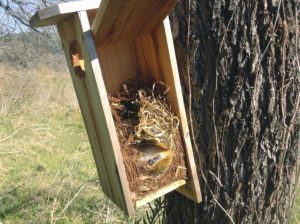 It is hard to believe today is the first day of winter since the frosty temperatures and gray skies seemed to come earlier than normal this year. And while most of us are spending the last few weeks of 2018 reflecting on the past year, it is never too early to start planning for the New Year. Take advantage of these cold days to grab your favorite hot beverage and begin planning a good start to your wildlife management activities for 2019.
It is hard to believe today is the first day of winter since the frosty temperatures and gray skies seemed to come earlier than normal this year. And while most of us are spending the last few weeks of 2018 reflecting on the past year, it is never too early to start planning for the New Year. Take advantage of these cold days to grab your favorite hot beverage and begin planning a good start to your wildlife management activities for 2019.
- Winter & Resident Bird Surveys (WRBS): We are currently finishing these up for the season, but still have some room to fit in a few more before February 15 – Schedule yours today!
- Nest Boxes: Check and clean these out before the upcoming breeding bird season
- Imported Red Fire Ant Control: Begins in March
- Brush Management: Needs to be done before the breeding bird season, which begins in early March
- Spring Breeding Bird Surveys: Begins March 17
- Camera Surveys: Post hunting season is a good time for this activity
- Feral Hog Control: Late winter through spring is an ideal time to reduce feral hog numbers prior to spring nesting/fawning
- Strip Mowing & Discing: Best conducted up until late February
- Tree Trimming: Not a qualifying activity, but this is the time of year to do it
- Tree & Shrub Planting: This is the best time of year to plant woody plants
Importance of Proper Deer Management on High Fenced Properties in Hill Country
By Kyle Lassiter, Staff Biologist I
Some people often see high fencing a property as a cure-all for managing deer populations to their liking but don’t always realize the responsibility that comes with it. Properly managed high-fenced properties can often produce impressive trophy bucks and overall healthy and productive populations. However, if not managed properly it can create just as many problems, if not more than it does benefits. If you choose to high fence, the herd that used to have free roam over a wide area has become a captive herd and it is now your responsibility to ensure they have quality habitat, food, and resources provided to them every day.
Most of the Hill Country already have an overpopulation issue when it comes to white-tailed deer. Confine them to an enclosed area, allow them to overpopulate and those effects can get exacerbated quickly. Competition for resources among those in overpopulated areas increases, putting extra pressure on some individuals, often resulting in poorer antler and body conditions. Eventually, the overall habitat quality and diversity will decrease and plant communities will suffer. These plant communities are a landowner’s most important asset. Diverse, quality plant communities not only benefit deer populations but also songbirds, small mammals, quail, turkey, and all other wildlife that may be utilizing the property. With healthy rangelands, you will have more diverse plant life and wildlife populations, superior hydrologic functioning (less runoff and erosion, more infiltration, higher spring flows), and a more aesthetically pleasing property.
Proper population management is essential not only to a healthy habitat but also to improving herd quality, i.e., fawn crop, average body weight, and antler size. If left improperly controlled, populations will eventually increase until the habitat becomes limited, resulting in decreases in the overall quality of the herd. It is important to be aware of the current densities occurring on your property for proper population management. The recommended white-tailed deer herd density for a well-managed, seasonally hunted Hill Country lands in good condition, should be approximately 10-15 acres-per-deer. The recommended density for mixed native-exotic herds on the same lands should be 7-10 acres-per-deer. Maintaining optimal mixed-herd sizes, much like appropriate livestock stocking rates, will help sustain the health of a property, ensuring that it will continue to provide high-quality forage for the benefit of other wildlife species.
Sex ratio can also play an important role in the proper management of deer. In an ideal world, you would want a sex ratio somewhere around 1 to 2 does-per-buck for a sustainable herd. If there is an abundance of does but very few breeding bucks, it can result in negative impacts for the herd. When the does-per-buck ratio is much higher, there is a high possibility that a receptive doe will not be bred when she first experiences estrus (becomes sexually receptive) in the fall. If a doe isn’t initially bred, she will come out of estrus temporarily but will experience estrus multiple times during the rut until she is bred.
If the doe is not bred until the end of the rut the resulting fawns will be born much later than if they had been conceived near the beginning of the doe’s estrus cycle. Greater stress is then put on the doe and the fawns will typically be smaller than other individuals born in the same year class. More typical than not, a late-season fawn will be undersized. If doe-per-buck ratios are closer to desired ranges it can help improve the overall body conditions of the herd as well as encourage breeding competition between bucks so that the strongest and largest bucks are the ones that end up breeding with the does. Keep in mind that one buck can impregnate multiple does. If there are substantially more does than bucks breeding competition will be low and a poor quality buck can potentially breed with multiple does lowering the overall herd quality. Also, the overall population growth potential will be extremely high.
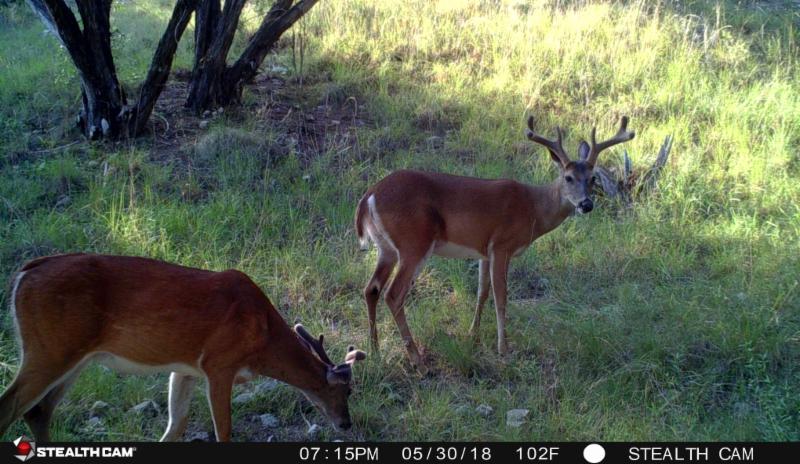 These densities and ratios can often be difficult to achieve, especially in mixed-herd populations, as you are adding more breeding populations that need to be actively managed and controlled in addition to white-tailed deer populations. Not being able to harvest enough animals required to meet desired densities every year is an understandable and often an expected occurrence, which should not be discouraging. Management and control efforts of any kind to reduce the population size will result in the ongoing progress toward long-term goals of healthy ungulate herds and habitat. Should any difficulty be encountered in meeting these goals, the majority of hunting efforts should be strongly concentrated toward does in order to help reduce sex ratios and limit an undesirable high productivity rate.
These densities and ratios can often be difficult to achieve, especially in mixed-herd populations, as you are adding more breeding populations that need to be actively managed and controlled in addition to white-tailed deer populations. Not being able to harvest enough animals required to meet desired densities every year is an understandable and often an expected occurrence, which should not be discouraging. Management and control efforts of any kind to reduce the population size will result in the ongoing progress toward long-term goals of healthy ungulate herds and habitat. Should any difficulty be encountered in meeting these goals, the majority of hunting efforts should be strongly concentrated toward does in order to help reduce sex ratios and limit an undesirable high productivity rate.
With all this in mind, it is very important to have one or more census activities to get proper estimates and keep track of trends and activity within the populations. Camera and/or spotlight surveys can be conducted every year in order to identify and analyze population trends as well as determine the efficacy of applied management practices. Harvest records, stand counts, and incidental observations can be kept and diligently maintained in order to detect changes, measure progress, evaluate management success, and predict future needs. Daytime incidental observations are an excellent way to supplement and improve the accuracy of other survey estimations. Monitoring browse pressure on key food plants can indicate if the habitat can support the population. The results from these activities are essential to maintaining and managing a healthy population.
Will supplemental feeding help if I have too many deer?
Supplemental feeding is often seen as a quick fix to overused land but can instead intensify the degradation of the surrounding habitat, especially around feeding locations on a high-fenced property. If the property becomes overpopulated and overused supplemental feeding alone will not work. Deer will often visit these feeding sites more often than usual and feed on the surrounding vegetation, resulting in the local degradation of habitat. This local degradation can increase less desirable or invasive plants as the deer reduce the competitive ability of the native plants. To try and minimize the negative aspects of supplemental feeding, you can move the location of your feeding stations periodically which will allow the surrounding habitat to recover from excessive browsing.
Can having exotics on a high-fenced property affect my wildlife management valuation?
Some appraisal districts do have issues with high exotic populations. Since they are not native, exotics are considered livestock, not wildlife, by the state of Texas. High densities of exotics on a property could create questions about your primary use for wildlife management, potentially resulting in the loss of a wildlife management valuation. For most well-managed properties this shouldn’t be a problem but the primary use issue can come into play when there are far more exotics on the property than natives. If this is the case for you, it may be in your best interest to consider a switch from wildlife management to ag for an exotic livestock valuation. If you choose this route, it would essentially be the same as traditional ag for cattle or goats but with exotics as your “livestock” and a few key points would need to be considered/met:
- Exotic animal operations raise the animals for the production of meat or other commercially viable products such as leather, feathers, or byproducts used in cosmetics or for medicinal purposes. Exotic livestock will need to be actively bred, sold, and/or traded.
- Hunting is not considered a commercial product of exotics; it is considered a recreational activity. If hunting is the principle use of the exotic animals then the land will not qualify for agricultural use valuation.
- Typically a minimum of 3 animal units required but can vary by county and animal
- Property should have adequate fencing suitable for livestock containment
- Water supply suitable for the number of stock
- This type of operation, depending on the species of animal, usually requires a “deer-proof” high fence.
Back to TopBack to Top
Plateau is Expanding North
Thanks to continued support from landowners across Texas we are expanding our core service regions! We are now able to offer our full suite of services including Wildlife Management plans, products, services, and consulting to Coryell, Mills, McClennan, Hamilton, and Bosque Counties. If you own property in these counties or know someone who does, keep us in mind for any wildlife management valuation or property tax consulting needs. We’re excited about this step towards a DFW-area Plateau location. Stay tuned!
If you have questions about our service regions or any of our services call Tim Milligan at (512) 894-3479 or email [email protected].
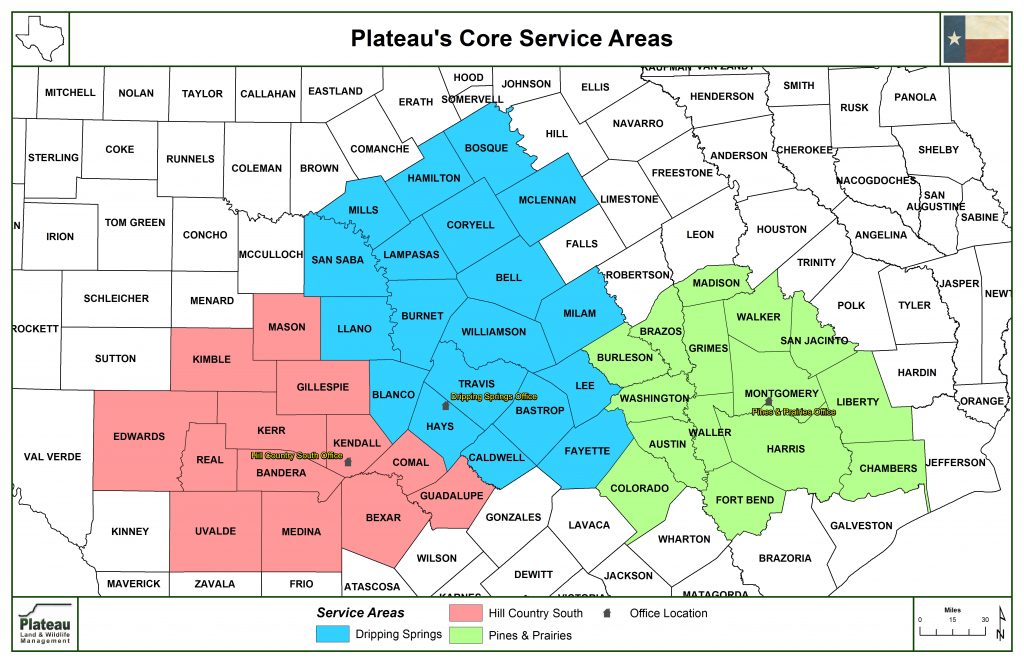
Back to TopBack to Top
What Is This? iNaturalist Review
By Mark Gray, Senior Wildlife Biologist
One of the most rewarding components of working at Plateau is that I am continuously increasing my knowledge of the natural world around me. Whether I’m doing a nature walk with a leading botanist or watching a webinar on invasive plants during my lunch, I learn something daily. Shortly after Plateau’s busy season in April, I was introduced to an extremely exciting tool, the iNaturalist app. Nick Fisher, Plateau wildlife management technician extraordinaire, brought in a turtle and asked if I knew what it was. Unfortunately, or fortunately, in this case, I didn’t. Someone else suggested we could use the iNaturalist app to help with the identification. Within seconds, and in my mind with wizardry, the app had provided the correct identification of the turtle. Talk about snowballing, I downloaded it and went on a mission to trick it. Observation after observation the iNaturalist app correctly identified grasses, wildflowers, birds, and even mushrooms. It is not perfect, but this is one of the greatest tools I have used.
The iNaturalist app, and even deeper with the web interface, has numerous features that not only benefit the individual using it, but also the community (Roughly 1.2 million users). First of all, it aids in the identification of your observation with either an accurate match or provides an avenue for others to help in the identification by offering suggestions to the correct identity. iNaturalist is a citizen science project that allows naturalists and nature enthusiasts a means of sharing and exploring data. Every bit of information can potentially be used, providing a much-improved data bank. Next, it allows you to track your observations. Finally, and most importantly, it is an exceptional educational tool. I now spend several hours a week checking lights at night for moths and have a growing knowledge of moth identification. I have always believed educating yourself about the natural world around you aids in the desire to protect and preserve it. Below is a short tutorial on how to use the app. Please let me know if you have any questions. My recommendation starts with trees, shrubs, wildflowers, and bugs. Be ready to be amazed and addicted.
Back to TopBack to Top
Service Spotlight: Seminars
It’s Property Tax Season!
Landowners in Ag or Timber – Come learn how a wildlife management plan keeps your ag or timber valuation in place while improving the beauty of your land and ease of operation.
Plateau will travel and present 29 seminars in various cities across Texas in January, February and March to explain the ins and outs of wildlife management valuation, provide examples of qualifying activities and be your resource for any questions or concerns you may have about managing for native Texas wildlife.
You can find the schedule of locations on our event directory.
The deadline to file is April 30, 2019. Contact us today to get started on your Plateau plan today!
Back to TopBack to Top
Fire Ecology in Texas
By Andrew Eberly, Wildlife Services Technician I
As temperatures drop and many people’s workdays begin and end without the warming rays of the sun to motivate and inspire, many people want nothing more than to curl up by the fire with a good book and a warm beverage. Winter is also one of the seasons when many professional land managers across the southern United States harness the power of fire to promote the development of grasslands and savannas and improve habitat for a diversity of wildlife species. Fire has been a part of the Texas landscape for many thousands of years and most of the plant and animal species that live here have adapted some method not only to survive wildfire, but also to use this form of natural disturbance to their advantage. Here are a few examples of organisms adapted to deal with fire.
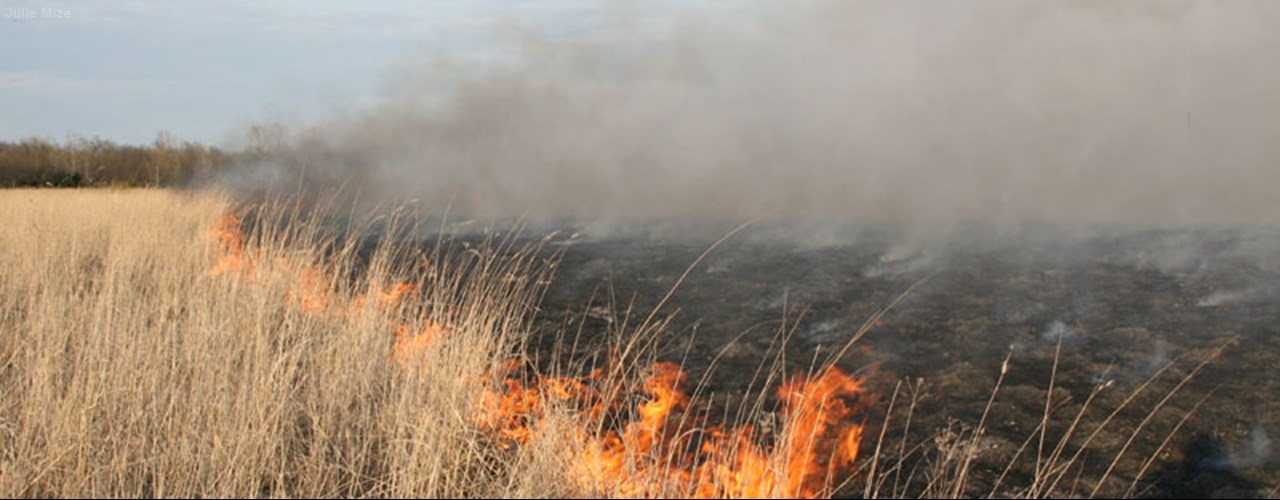
Photo courtesy or Texas A&M Natural Resources Institute
Longleaf Pine
If you are lucky enough to live in far eastern Texas or have traveled in the southeastern US, you are fully aware that one of the first things to indicate your arrival in the region is your nose. It is a landscape of wonderful smells, especially the sweet, sweet fragrance of longleaf pine and loblolly pine on a sunny, humid morning. Another smell you may associate with the gulf coastal plain, especially in winter or early spring, is the smell of smoke from the many fires intentionally set by land managers to promote the growth of healthy pines and restore the open, savanna-like ecosystem that once dominated the sandy soils of the region. In fact, frequent, low-intensity fires are absolutely crucial for the maintenance of pine ecosystems in the southeast.
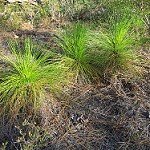
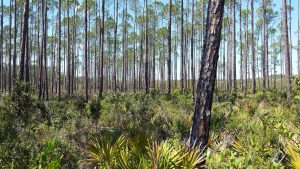
Look at the photo on the left. No, these are not bunches of luxuriant grasses growing on the forest floor. These are, in fact, pine trees. Longleaf pine begins life in the “grass stage” where it may remain as a tuft of long needles poking out of the ground for many years. That is until a ground fire sweeps through and tells it that it’s time to become a tree! In the middle of that mop-top of needles is a bud, poised and ready to grow. The bud is surrounded by moist needles and protected by a layer of resin and silvery, reflective scales. These prevent the flames from reaching and killing the bud. Indeed, this lick of fire stimulates the tree to grow, and grow fast! By the time enough fuel (in the form of pine straw, grasses, and woody debris) has built up for another fire, the branches and needles are well above the height where they would be harmed by the flames.
The photo on the right shows a forest of more mature longleaf pines a few years after a fire. If fire were to persist in this area, recurring every few years for many years, a savanna ecosystem would form with broad, grassy openings between widely spaced, tall, elegant pines. The many-layered, puzzle-piece bark of these trees makes it extremely unlikely that a typical ground fire will harm the trunks.
Indiangrass
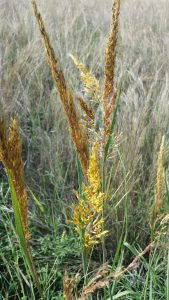
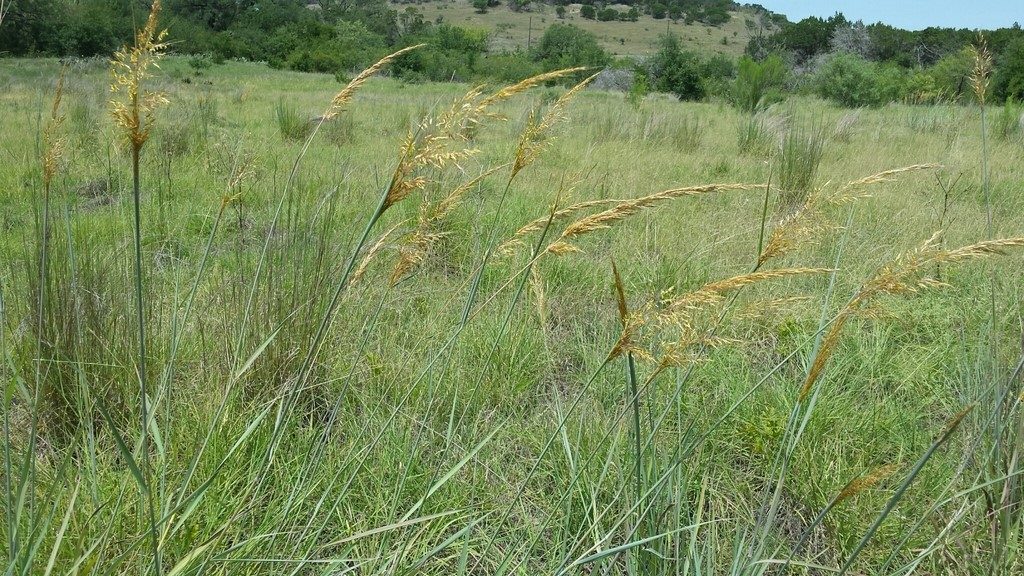
The golden inflorescence (flowers) of Sorghastrum nutans or Indiangrass makes this, in my opinion, one of the most attractive grasses around. Indiangrass, along with many other native grasses, exemplifies the vast, treeless prairies that once occupied much of the flatter portions of central Texas. Flat plains have few natural firebreaks like canyons and rock outcrops, thus lighting and human-caused fires spread more easily. Indiangrass is at its best in this situation, tending to increase in density and vigor in the years following fire. When the prolific leaves of warm-season grasses like Indiangrass dry out at the end of the growing season in October or November they are considered “cured” (i.e. ready to burn). Some research indicates that these grasses may actually become as flammable as possible on purpose! This is because fire eliminates woody species that would otherwise invade grasslands and compete while leaving the well-adapted grasses unharmed.
How can a dry, highly flammable plant be unharmed or even helped by fire? The key to their success lies in the rhizomes. Rhizomes are sort of a cross between a root and a stem that grows just beneath the soil surface. These structures contain lots of stored energy that was captured by the leaves during the growing season and sent underground out of harm’s way. When a wanton bolt of lightning or drip of petroleum from the torch of a highly trained land manager hits the cured grass, the aboveground portion burns, recycling its micronutrients back into the soil. When the growing season arrives again, lateral buds connected to the rhizome, which is still fully alive, spring into action and more leaves and beautiful golden inflorescences can take advantage of the enriched soil and relative lack of competition.
Grasslands maintained in this way are vital habitat for a number of wildlife species specifically adapted for life in the open. Here are a few examples:
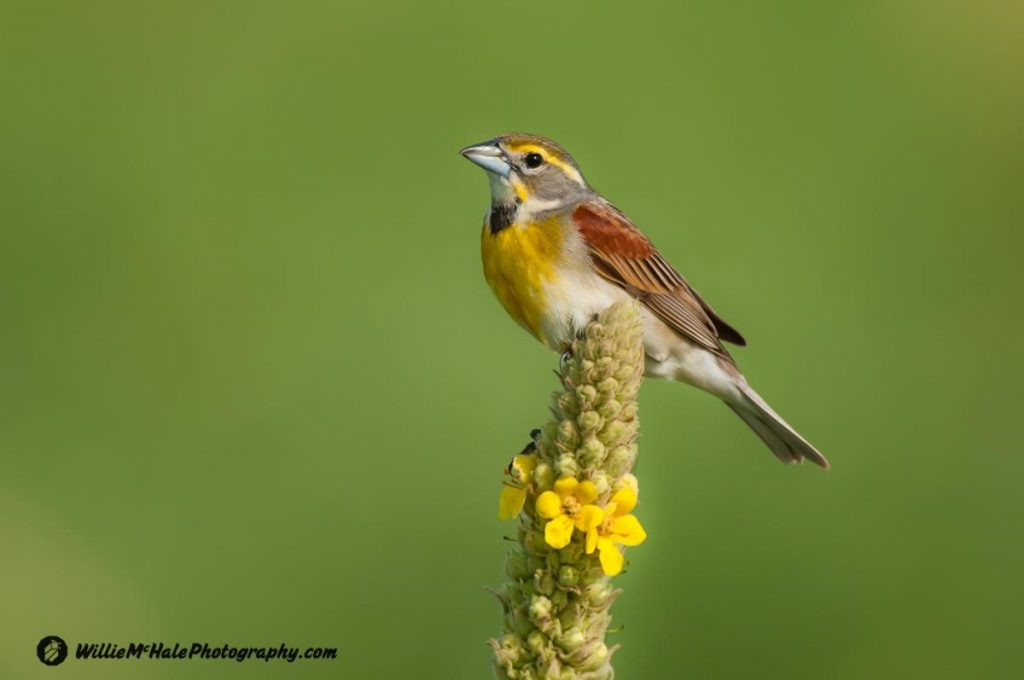
The Dickcissel is a grassland obligate songbird that nests amongst tall grasses and can often be seen singing from the top of a prominent perch such as tall annual plants or lone trees.
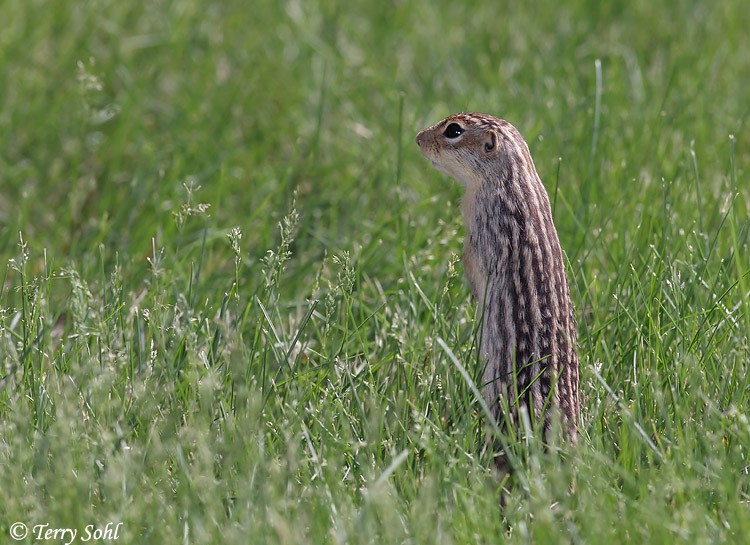
The Thirteen-Lined Ground Squirrel lives throughout the grasslands of central North America. Like small mammals of grassland habitats, they spend significant time in burrow systems underground where it finds shelter from harsh weather and predators.
Ashe Juniper (Cedar)
The infamous Ashe Juniper or “cedar” is well known to everyone living in Texas east of the Pecos and west of the Brazos. As abundant and widespread as it seems to be, this species is actually only found in a band of territory from northern Mexico, across Texas up to the Ozark Mountains in Missouri and Arkansas and is specifically adapted to life on our limestone plateaus.
Most of the adaptations that make so many of Texas’s trees well adapted for fire are lost on Ashe Juniper. In fact, this species cannot do most of the things that allow a tree to survive fire, like sprout from stumps and roots, grow tall, branchless trunks, and possess thick bark. So, why am I even talking about it here? Well, it would appear that the crafty cedars have their own unique way of surviving in a landscape where fire was once common: they exclude it entirely. If you have ever picked your way through a dense stand of cedars (as you likely have), you will notice a few things. First, very few other plants grow in the shade of the cedars themselves. This means there is nothing to dry out at the end of the growing season and act as tinder. Second, the trees grow in clumps that are not necessarily connected to one another. In other words, the canopy is not fully closed and even if a fire does start, it is hard for it to jump the space between clumps. This is not to say that cedars cannot burn. In fact, fire can be a useful tool in controlling the encroachment of Ashe Juniper into grasslands. It just requires some mechanical treatment in the years leading up to a fire to ensure there is enough fuel.
Historically, cedars, along with a number of other woodland tree species, occupied areas where fire was infrequent enough to allow them to gain a foothold. Then their unique adaptation of excluding fire allowed them to survive unharmed as the surrounding prairies burned.
Here in central Texas, there exists an endless debate about the historic appearance of the landscape. Was it all a treeless prairie? Or a forest of huge live oaks and cedars? Or perhaps it was a sea of bluebonnets from horizon to horizon? Determining a “true,” singular ancestral condition is difficult. This is probably because we live along a transition zone — a constantly shifting mosaic of habitats combining aspects of the Great Plains to the north, the Chihuahuan Desert to the west and coastal plains to the south and east. Believe it or not, one of the most important sculptors of this mosaic is fire. By some accounts, lightning and humans burned some of the areas almost every year for thousands of years. On the other hand, many areas, especially on steep slopes and canyons, appear not to burn very often at all. One thing is for sure: many of the plants and animals possess adaptations that allow them not just to survive fire but also to thrive in the presence of fire.
Back to TopBack to Top
The People of Plateau
Name: Shantel Porterfield
Title: Staff Biologist I – GIS Specialist
Time with Plateau: 7 Years
Hometown: Marshalltown, Iowa
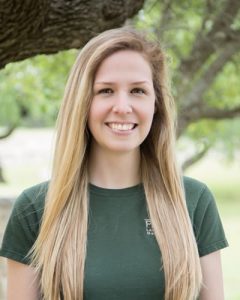
Before working at Plateau, what was the most unusual or interesting job you’ve ever had? I volunteered at a private zoo. I helped feed and clean up the cages of a plethora of exotic animals: tigers, warthogs, birds, monkeys, coati, exotic deer, and more! I especially enjoyed taking care of a baby capuchin monkey that was rejected by its mother.
What was your first job? My first job was working at American Eagle while in high school.
What do you like most about working at Plateau? I can’t choose just one thing! I love helping landowners get their land back to a more natural state and I really enjoy my coworkers. It’s like a family here!
How do you define success? I believe I’ve been successful when I make someone happy, whether it’s by something I’ve done or by a product I’ve created for them.
If given a chance, who would you like to be for a day? I’d probably like to be my 2-year-old for a day. He has no cares or worries in the world!
What is your favorite food? This is a hard one as I love food! My “desert island” dish would have to be a pasta with pumpkin and sausage recipe by Rachael Ray, though.
If you were an animal what would you be? A tiger! I’ve been so intrigued by them since I was a kid.
People would be surprised if they knew…? I received my black belt in American Karate in 2005.
Where would you like to travel to? I’d love to visit India for the beautiful culture and amazing food. And I could go see a tiger in the wild!
If you could learn to do anything, what would it be? I own a guitar that I have yet to learn how to play.
You’re happiest when? I’m happiest when I’m hanging out with my family!
Back to TopBack to Top
Permian Highway Pipeline
Braun & Gresham, PLLC

Overview
Exxon Mobil joins Houston-based Kinder Morgan in partnership with Midland-based EagleClaw Midstream on the $2 billion Permian Highway Pipeline. The 42-inch buried natural gas pipeline will be 430 miles starting north of Fort Stockton and stretching across much of Texas’ Hill Country to its destinations near Houston. It will connect with other lines that will reach down near Agua Dulce. Both major lines will feed smaller lines that stretch across Southeast and South Texas. Some of its product will end up in Mexico.
Project Details
The company will purchase 50-foot easements from landowners, plus an additional 25 to 50 feet of work easements, for which landowners also will be paid. Plans could change depending on easements, environmental or cultural surveys. Kinder Morgan officials say, “Once the line is buried, we return the land to as it was and landowners can still run livestock. We just require no buildings or long-rooted trees planted near the line.” The lines are buried at least four feet deep, then backfilled and the property reclaimed with groundcover.
B&G Update
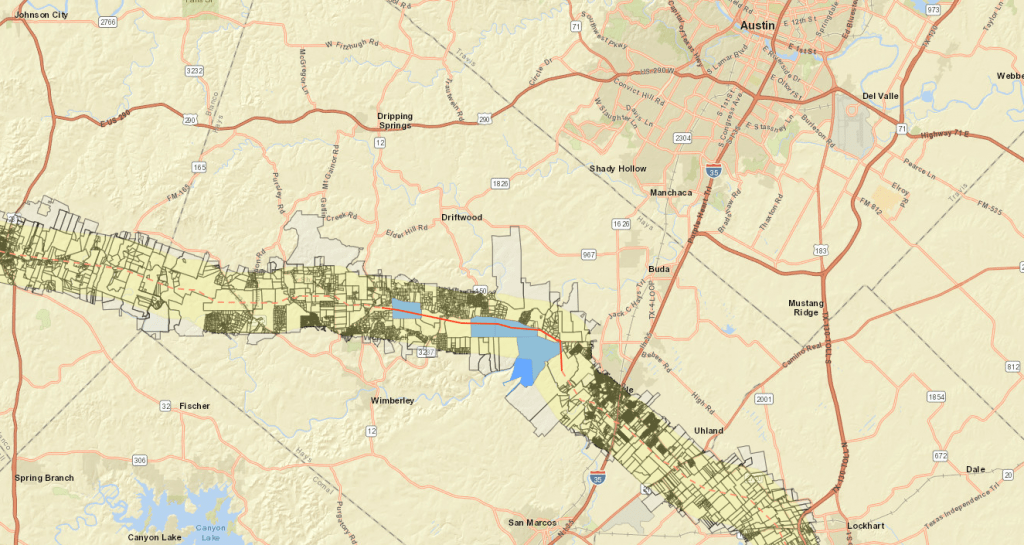
This 3-mile wide buffer (yellow area on the map) shows the most likely route for this pipeline. The public maps made available by Kinder-Morgan are not precise enough to locate the corridor with more certainty. Landowners are helping Braun & Gresham to pinpoint the actual pipeline route Kinder Morgan will not provide.
Click here for the interactive map
We are working to identify the precise route in order to create landowner coalitions for those affected by the pipeline, which will help keep legal costs at a minimum. If a condemning authority has approached you, please do not sign anything without representation!
Affected Counties
- Gillespie County
- Blanco County
- Hays County
- Caldwell County
Introducing Jan Gunter
Plateau Land Group

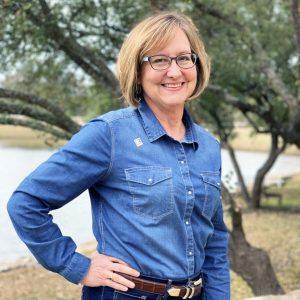
Plateau Land Group is excited to announce the addition of Jan Gunter, our newest Texas Land Specialist™ and REALTOR®! Jan represents buyers and sellers of rural property throughout Central Texas and beyond.
A native Texan, Jan was born in the Rio Grande Valley and grew up in Temple before moving to a farm outside of town with her family of beekeepers. There, Jan spent time riding the back roads with her mom, dad and siblings, feeding cattle, working bees, and extracting and selling honey for the family’s now fourth-generation honey business, Walker Honey Company. After going to college and living in two mountain states for more than a decade with her husband and two children, she and her family moved back home to Texas. Jan then worked in nonprofit communications for more than ten years before deciding to come back to her roots on the Texas land. Her dad believed in investing in land for the value and potential, saying, “You can always grow a garden.” She is currently a licensed Realtor® helping buyers and sellers with their rural property needs. As a member of the Texas Beekeepers Association and American Beekeeping Federation, Jan and her family continue to steward and enjoy their land investments on farms in Bell and Milam counties.
Click here to contact Jan.
Back to TopBack to Top
Plateau Land Group Featured Listing
Hidden Springs Ranch – Florence, Williamson County, TX
Hidden Springs Ranch is an incredible investment and recreational ranch located in northern Williamson County near the outer fringe of development. The size, beauty, and location make this a great place to enjoy while your investment appreciates. The population of Williamson County is projected to increase from 600,000 today to 2 million by 2050. This is a classic Hill Country ranch with numerous scenic hilltops providing long-range views, a rock bottom creek traversing the length of the property, and multiple ponds and lakes.
View all of Plateau Land Group’s listings.
Click here to receive PLG’s newest listings by email.
Back to TopBack to Top
Austin Wildlife Rescue Needs Landowner Assistance
By Sarah Smith, Board Member, Austin Wildlife Rescue

Austin Wildlife Rescue is searching for land to release native wildlife after rescue and rehabilitation. We are a non-profit organization dedicated to helping sick, injured, and orphaned wildlife and have been a proud Central Texas tradition since 1977. Austin Wildlife Rescue relies solely on the generosity of private landowners and private donations and grants. In part due to the boom in Austin’s development and population, our services have been in high demand—Austin Wildlife Rescue took in more than 7,000 animals last year, and we are in dire need of more release sites. Squirrels, opossums, raccoons, deer, skunks, birds, and foxes are some the most common wildlife that comes through our center. Once rehabilitated, these animals need to be released on suitable habitat.
Here are some of the answers to our most commonly asked questions:
Are there specific land requirements?
Yes. The ideal land is heavily wooded, at least 100 acres, and contains a live year-round water source with low banks for animal entry. Deer release sites require more land—upwards of 1,000 acres—with no high fencing.
Where are most of the release sites located?
We prefer to release within a two hours’ drive from Austin. This allows our staff ample time to travel to and from the wildlife center during daylight hours. However, release sites for deer may be broadened in location to accommodate for the additional acreage needed.
When do releases happen?
Releases typically happen weekly between March and November. We carefully track the number of animals released and prefer to use land sites biennially to avoid over-population. Animals are always released where natural food and water sources are available.
Can I specify species that I would or would not like released on my land?
Of course! Raccoons, foxes, and skunks will not be released near farms with chickens or young farm animals, and most birds of prey have to be released close to where they were found. We are always looking for open-minded landowners interested in accepting bobcats and coyotes.
Do the animals become a nuisance?
No. After a release, the animals disperse into their natural habitat and most landowners report that they never see them again.
We are currently hard at work securing more release sites for 2019 and getting ready to open our new rehabilitation center in Elgin. We appreciate your dedication to preserving and protecting Central Texas land and wildlife and look forward to the opportunity to work together.
If you would like more information on partnering with us as a landowner please contact our Release Coordinator, Sarah Smith (512-799-7087, [email protected]). For general information or to learn more about the organization, please visit us at www.austinwildliferescue.org.
Back to TopBack to Top
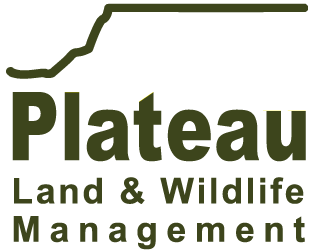




Sorry, the comment form is closed at this time.